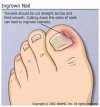Minimalist footwear is the newest and fastest growing segment of the athletic footwear industry today! The appeal for consumers seems to be the purported benefits of decreased injury risk and/or performance enhancing effects of minimalist shoes.
Manufacturers are marketing these shoes as more natural and more like being barefoot. Despite the fact that athletic footwear manufacturers spent the previous four decades extolling the virtues of their cushioning technologies and stability devices, some have now changed their tune and want to make sure you know that their shoes are now much more like being barefoot. There is a whole new way of thinking about running footwear and we can sum this up as “less is more.” The established manufacturers such as Brooks, New Balance, Asics, Adidas and others have introduced minimalist lines to compliment their established models.
The minimalist type of footwear has been available all along. For some unknown reason, the tipping point came recently and piqued the interest of the media and running consumers. Prior to the recent launch of the wave of minimalist shoes, traditional running shoes had been moving, even if slowly, toward thinner midsoles and lighter weight.
What exactly is a Minimalist Shoe?
This really depends on who you ask. As with any other category of footwear, there are no strict criteria that formally define a minimalist shoe. The manufacturers seem to be setting their own criteria. They are made to be light, flexible and minimally restrictive of foot motion within the shoe.
If you are going to decide to choose the Minimalist Shoe, there are a couple of things you need to consider. Only 10% of people are able to wear them because they only work for certain foot types. You need to also consider the terrain that you are running on and if it works well for these types of shoes. In conclusions, we will have to wait for the final verdict if the minimalist shoe can support the needs of the many. Enjoy pain free running!





